Rare book No°004
↑
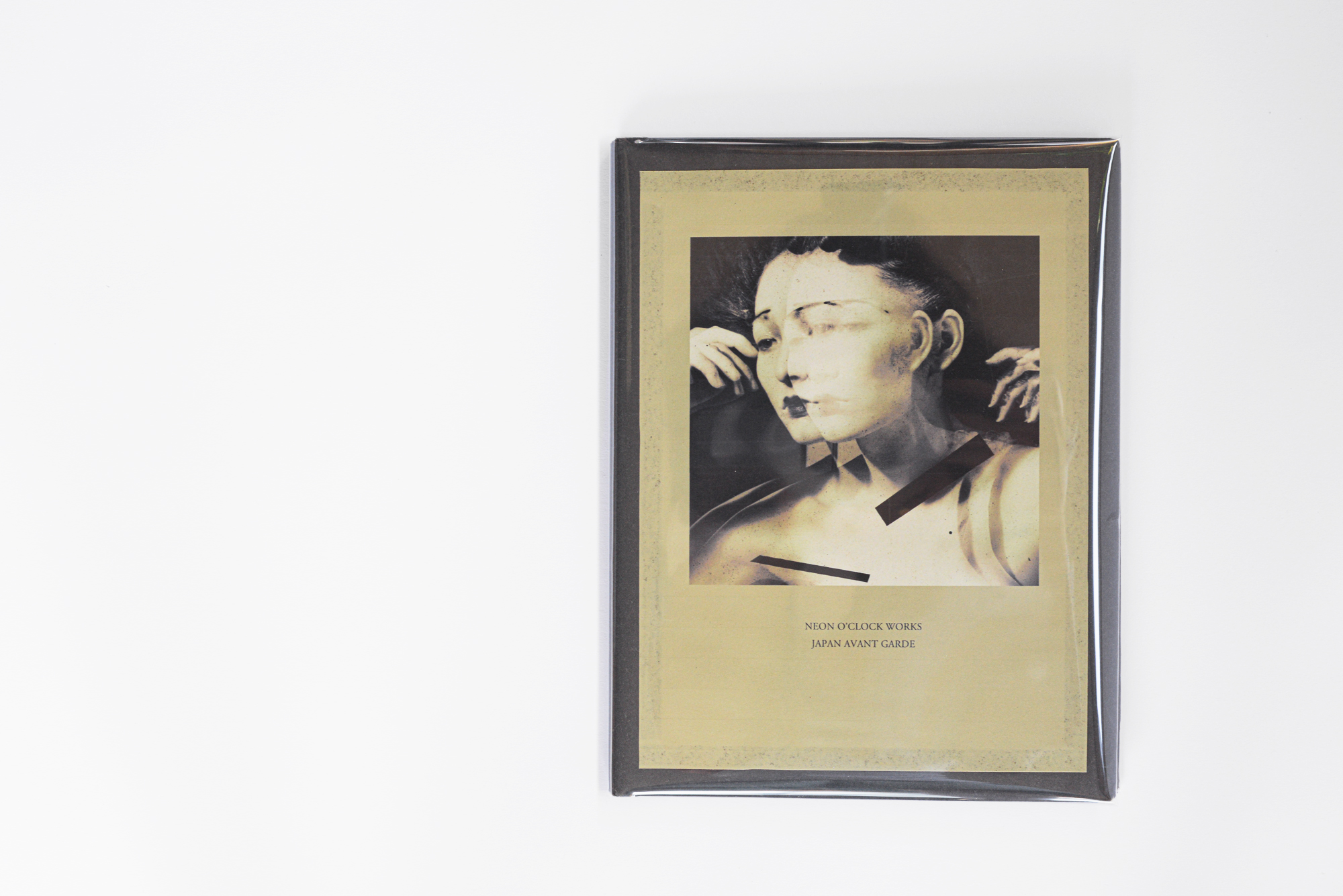
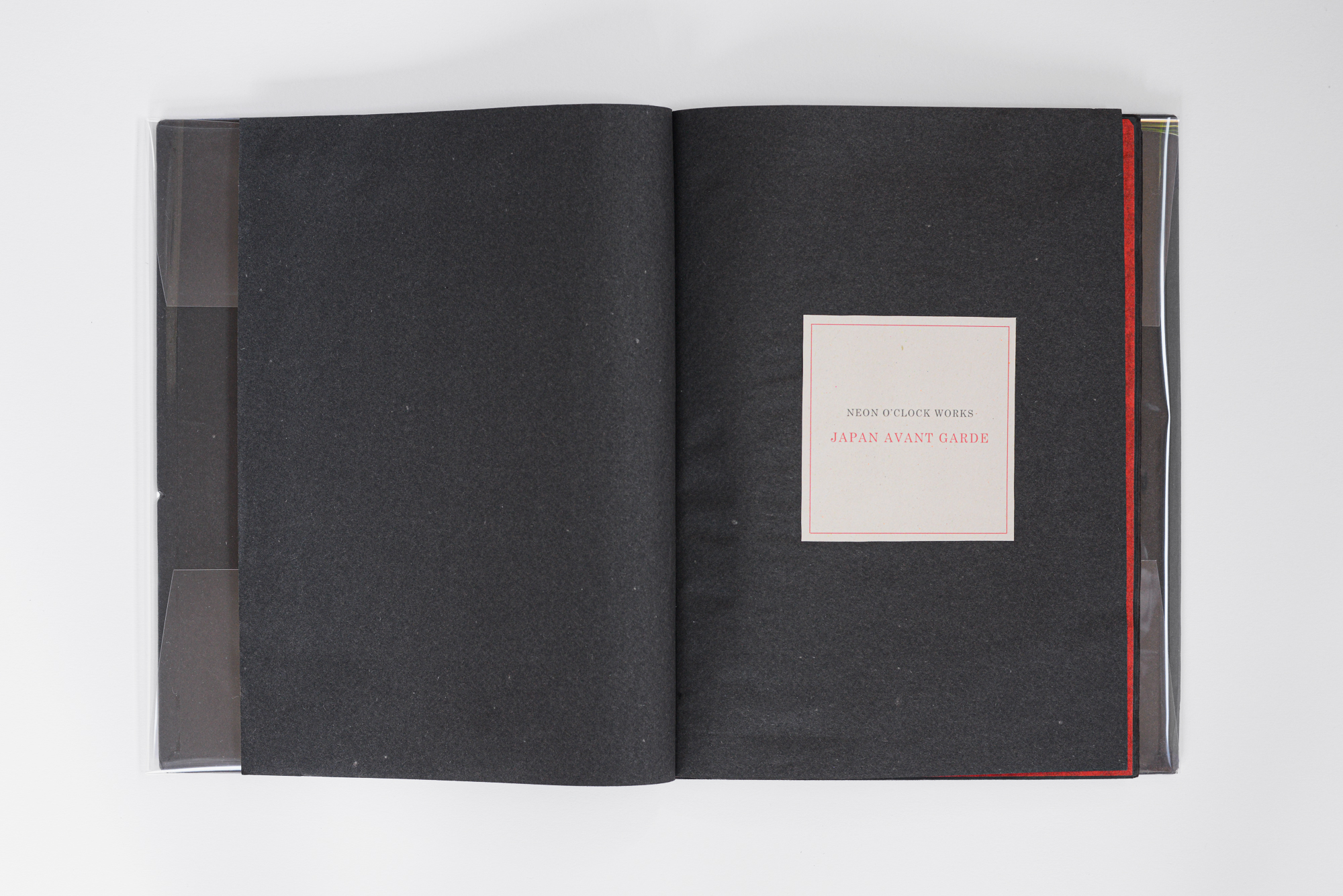
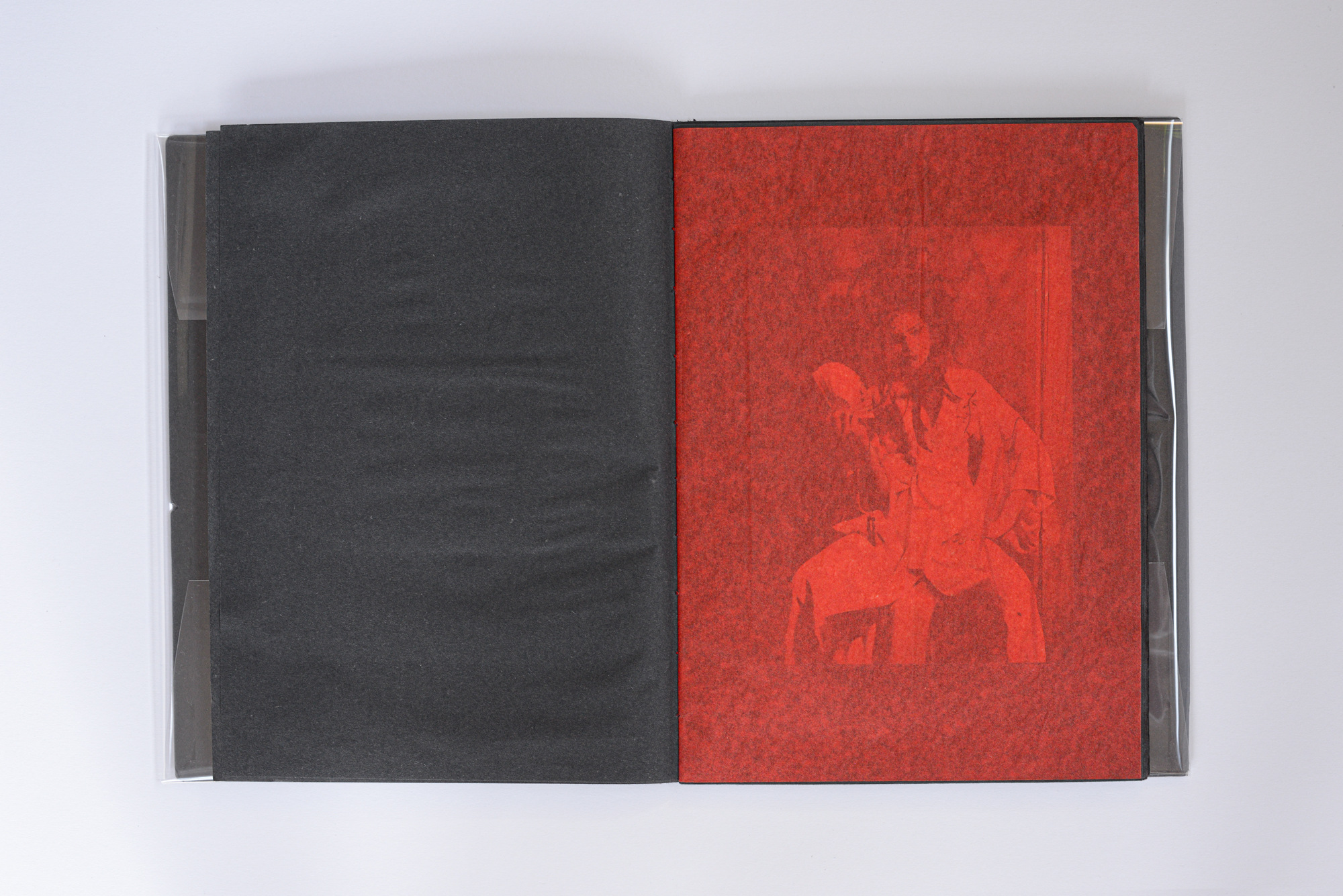

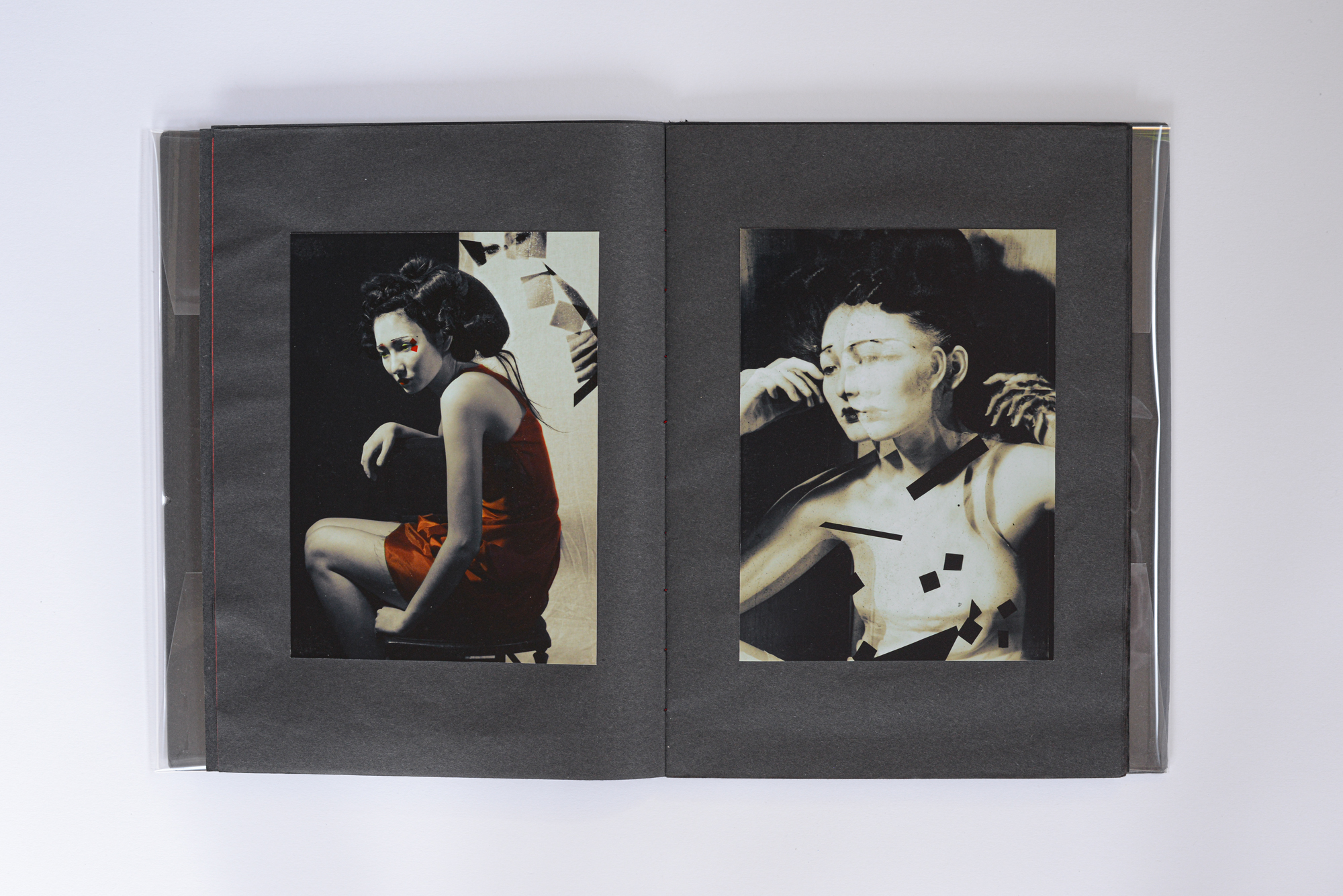
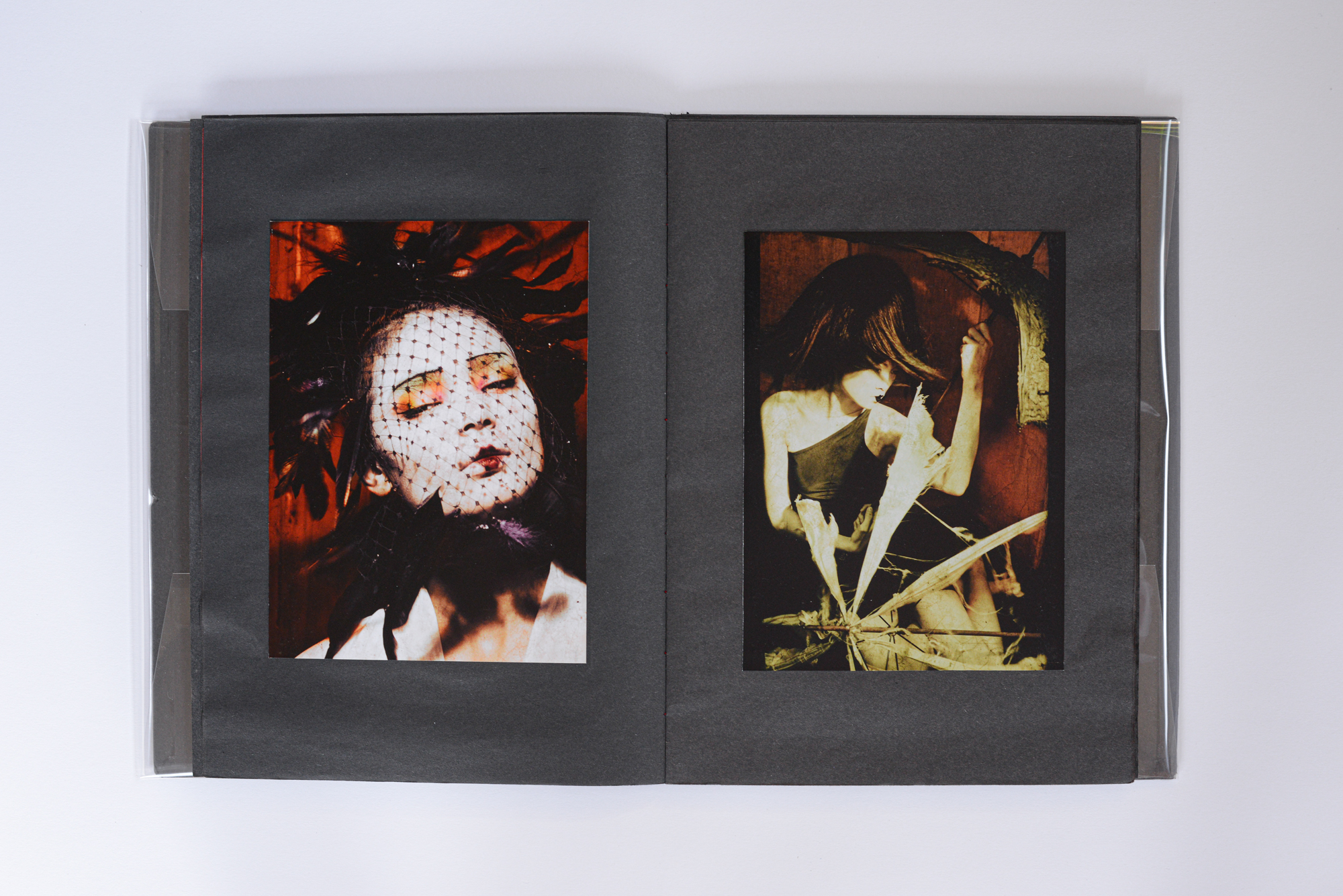
Expressing Japanese notion of beauty by using Geisha as a motif of Japanese traditional symbol of beauty. Having been westernized in many ways, we've found it a shame that respectable Japanese traditions are fading. We'd like to retain and recreate Geisha as a symbol of Japanese modern beauty by using vivid colours and avant-garde compositions.
芸者は伝統的な日本特有の女性像であるが、 その白塗りの化粧、あでやかな着物、しっかりと結い上げられた髪は ある種昔のものという風に、人々の意識から風化されつつあり それは現実味を失い、生活とはかけはなれた歴史上の存在となりつつある。 しかし芸者は女性の模範的美を保有し、その美しい外見のみならず 礼儀や作法という日本人特有の精神の美の表れでもある。 常に古き良きものを取り入れながら新しいものを生み出すという精神のもと JAPAN AVANTT GARDEに表現される女性たちは、そんな芸者のたたずまいに 新しい現代的な印象を与える。美しい女性像は今も昔も変わらず、表面的な変化を伴いつつも 根底では引き継がれてるというシンボルとして、鮮やかで強い色味と大胆な構成のなかに存在している。ロンドンに移住したことで、日本の美を振り返るきっかけになった一冊。
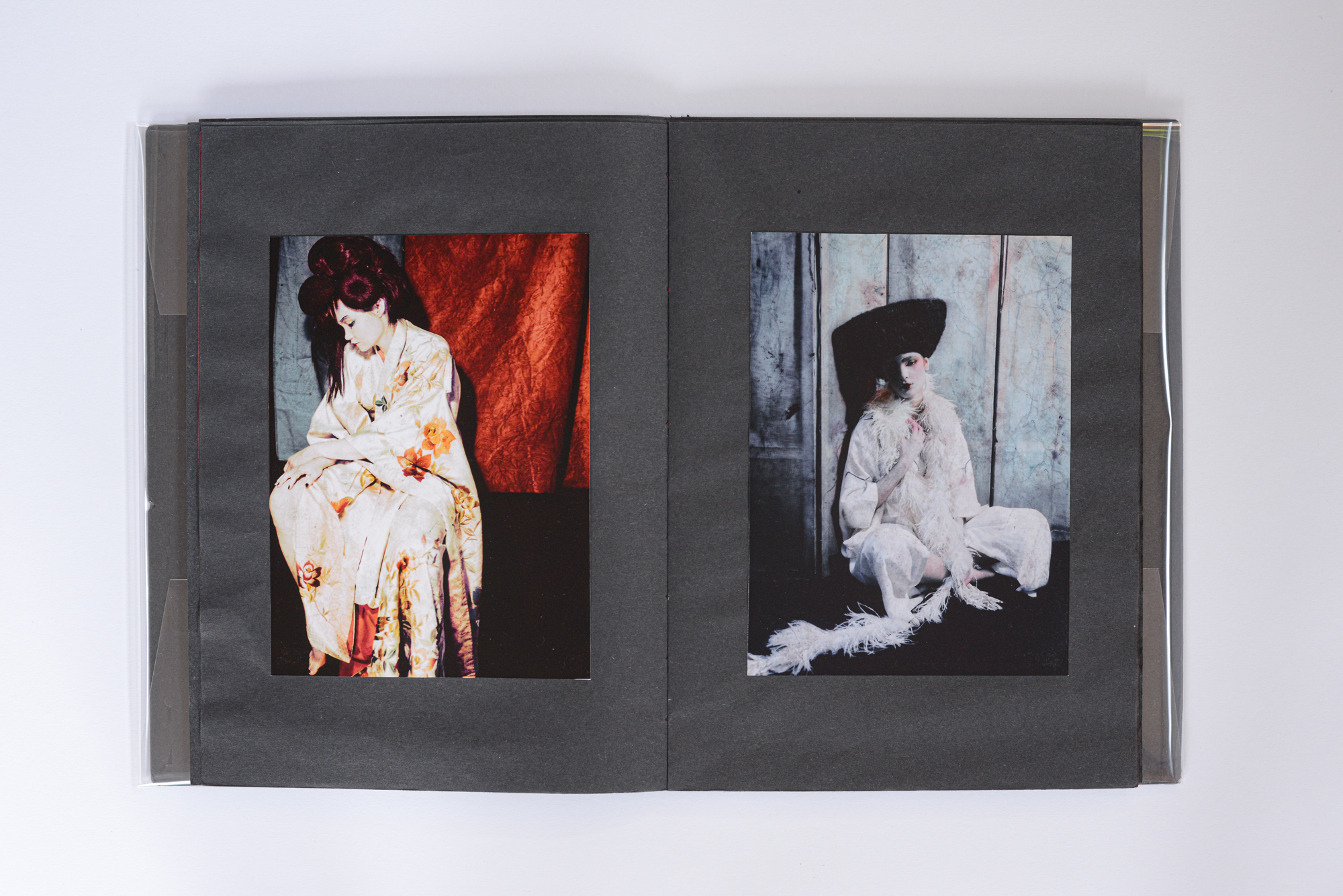
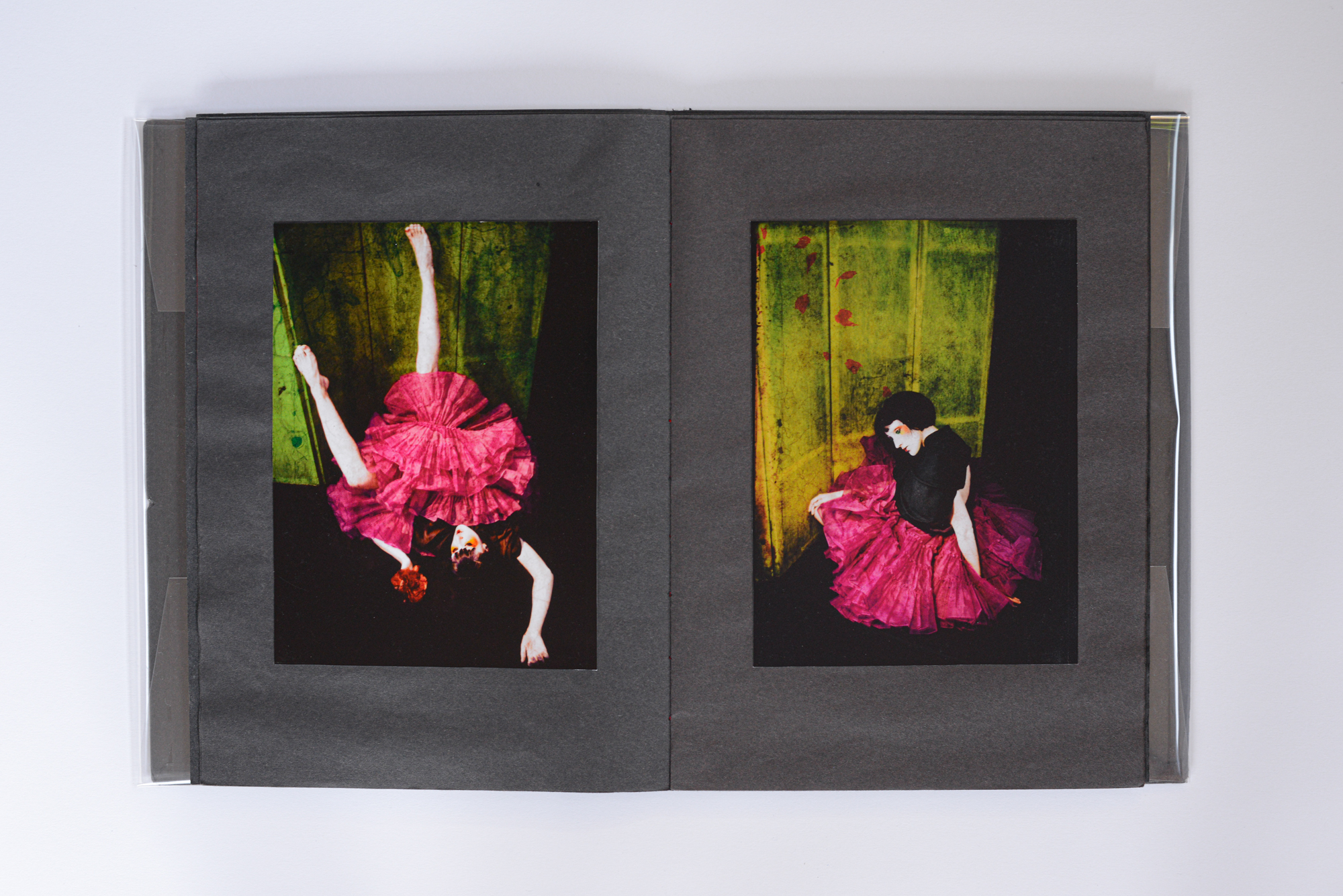
Neon O’clock Works
Tomihiro Kono & Sayaka Maruyama Japan Avant-garde
The creators of Neon O’clocks Works investigate the dark side of beauty. While so much fashion photography deals with lust or sadness, here the key word is pain, or more precisely, the inevitable suffering that goes along with the pursuit of beauty. Neon O’clocks Works is a duo of two young multi-media Japanese creatives, Tomihiro Kono and Sayaka Maruyama, who play with an endless variety of tools, from photography to installation, drawing, illustration and video. Early works consisted of photos of pale British girls showing corsets and standing rigidly, constrained by their Victorian clothing. Another key work in their fledgling career is KRAGENEIDECHSE, an installation first shown in a fashion show in London. Huge abstract corsets floated between dark shadows, appearing almost scary. For the duo, corsets are not a beautiful piece of lingerie but a “destructive tool,” a symbol of the pain endured to appear beautiful. Their latest work, Japan Avant-garde is a photographic series partly influenced by the heavily constrained world of Geishas. Sayaka Maruyama talks to Eyemazing…
Emmanuel Guiolaut: How and why did you decide to work as a duo?
Sayaka Maruyama: Our history traces back to 2002. In the beginning, Tomihiro was working as a hairdresser and I was assisting a photographer part-time. Tomi found the hairdressing job boring and he wasn’t satisfied and began to do photography as his personal thing with professional models. He had a huge passion and vision, and was so passionate about creating something. I met him and saw his work. He was looking for someone to develop ideas with and I was studying graphic design at that time. I had some tools involved in design as well and after that we realized we could combine this into photos to push the wall of the hair salon! We began to think of working together.
EG: How do you work together?
SM: We basically do very different things. Tomi can cut and style hair, and has lots of ideas of what he wants to do. He worked with photography assistants to shoot with models. On my side, I am good at drawing, painting, graphic design – as well as editing films. I do mainly photography now but I am more geared towards digital. We are very complimentary. Our first conceptual art work, Tipsy Deep Sea, was based on one of Tomi’s dreams. We made a story about an imaginary island.
EG: Beyond photography, your conceptual works involve many different techniques…
SM: As artists, we never focus on a specific medium. It could be photography, a short movie, illustration, objects, installation, space design, or a book – depending on how we want to express our idea. Our work goes on from one idea to another: if we could look back, the more we explored what we wanted to make, the bigger it became. We decided to make a story book, because we felt would be more effective to communicate what we had in mind. In the end, KRAGENEIDECHSE turned into a consistent series of photography, movie and installation.
EG: The installation KRAGENEIDECHSE was based on corsets. What was the inspiration behind it?
SM: KRAGENEIDECHSE was a part of our Hypnotism work, where we wanted to explore the world of beauty and the darkness hidden behind it. The corset itself is a controversial object. It turns women’s bodies into an ideal shape but at the same time it destroys their bodies. Its name (“Lizard’s collar” in German) is taken from a gorgeous scarf owned by Queen Elizabeth. We researched the history of the Victorian period and found corsets the most effective symbol for this destructive shape. Based on our research, we created movies, light boxes, collages, and installation pieces, displayed in dark space. Like in all our work, we want our viewers to watch in a fantasy that is a reflection of real life.
EG: Your new work, published here, is called Japan Avant-garde. How did it start?
SM: It is really based on my feelings as a Japanese living overseas. I think Japan is now a mixture of extremes, of “Japanese” traditions and “Foreign” influences, of “old” and “new”. These are the emotions I wanted to convey. Images are digital but combine traditional feel. The colours I chose are white and red but I still wanted the images to have a calmness, a beauty. The images are based on a Japanese “story”, created by Tomi, with found visual inspiration, but new but still based on traditional aesthetics. What could be a Modern Japanese beauty?
EG: And what are your current projects? What do you want to achieve?
SM: Now that we are based in London, we need to contribute to more “real” art scene. I want to work more as a photographer and Tomi as a hair stylist. Japan Avant-garde series actually started as a commission to approach magazines. We are also working to make the next Hypnotism series, and want to make more music videos. I’d also like to make a book based on my drawings and illustrations.
EG: Your work emphasises the suffering that usually accompanies the search for beauty. Yet, most people search for beauty because they want happiness. Isn’t it a contradiction?
SM: It is kind of contradictory but it is a contradiction that inspires us. For me, beauty has no absolute answer. I believe in constant anxiety and struggle. I want to keep pressing myself. I also feel that Tomi and I together, have such an amazing destiny. We are both Japanese but we found each other overseas. We came together, because we shared the same passion. I believe “beauty” is always subjective, always different – it has so many meanings. It’s contradictory, “bad” can be “good”, “ugly” can be “beautiful”, “white” can be “black”. Beauty is ambiguous and that’s why it’s very attractive to us.
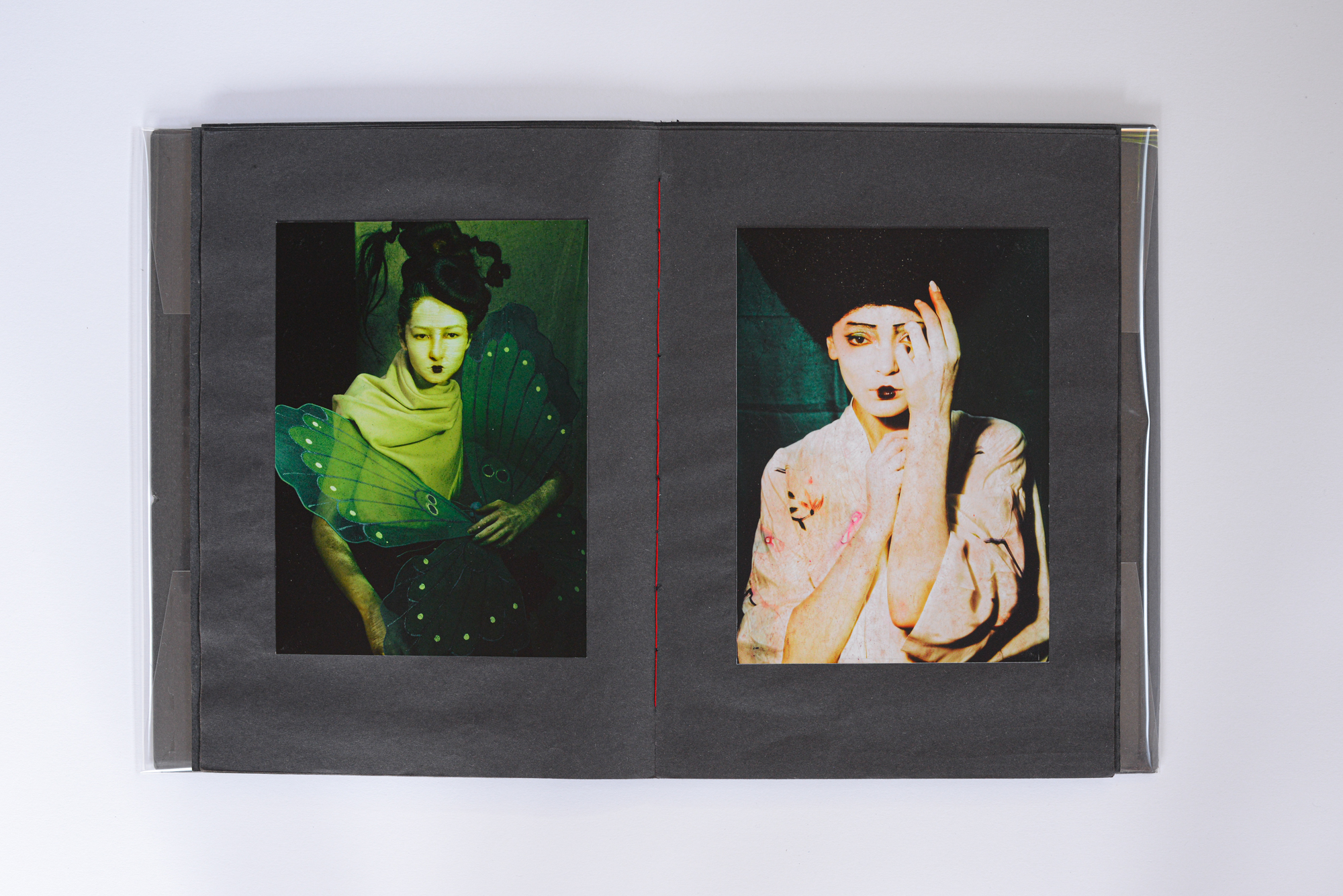
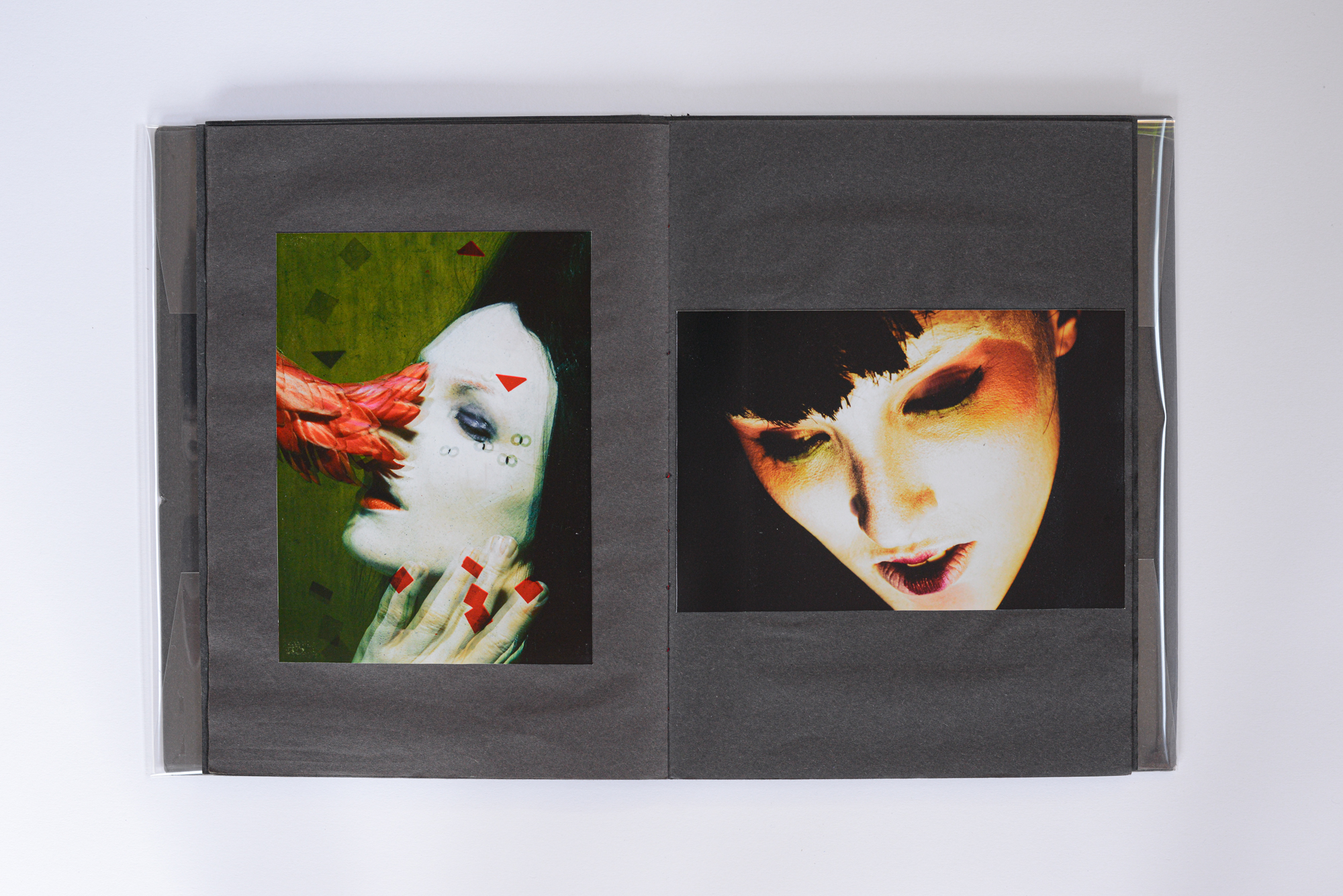
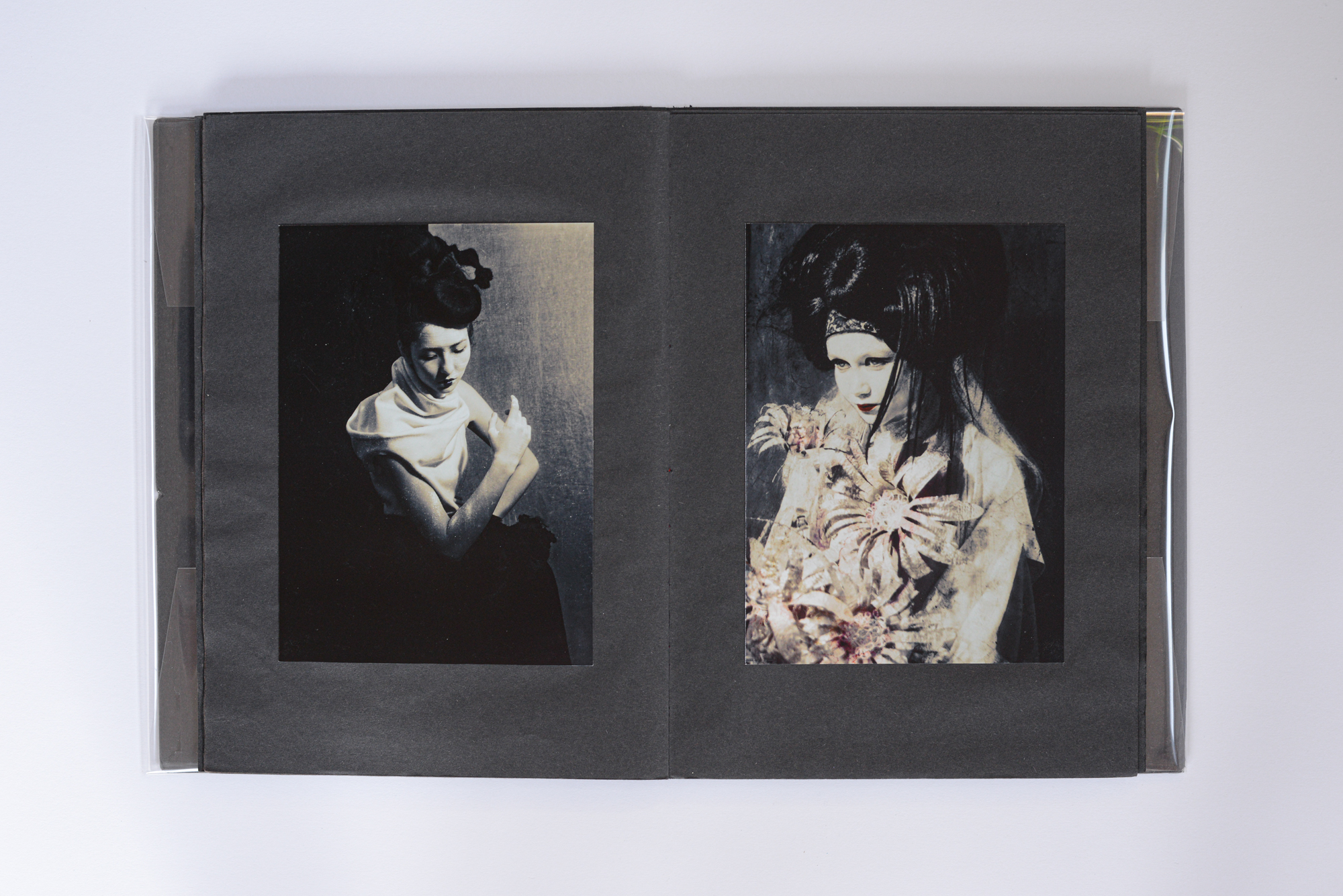
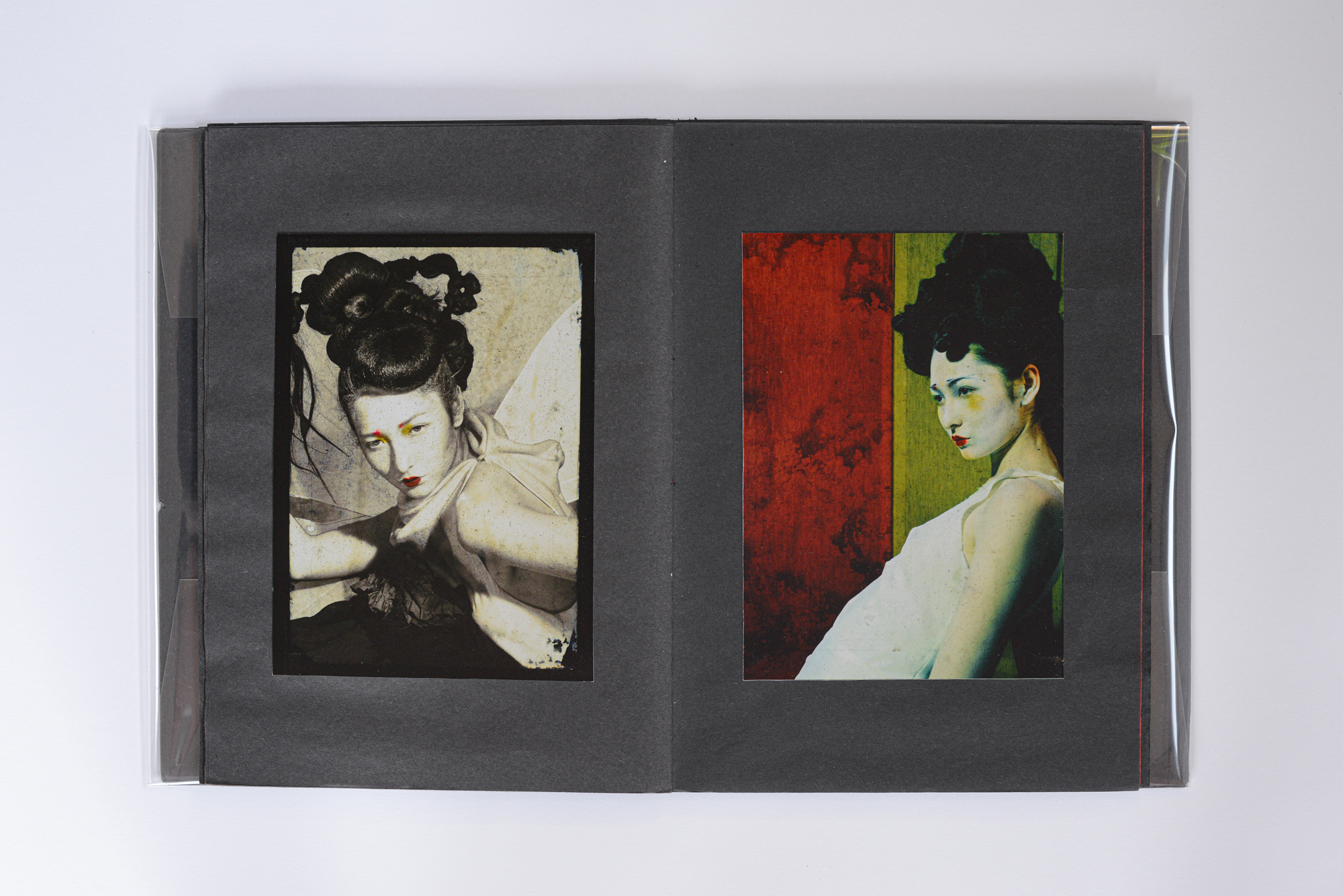
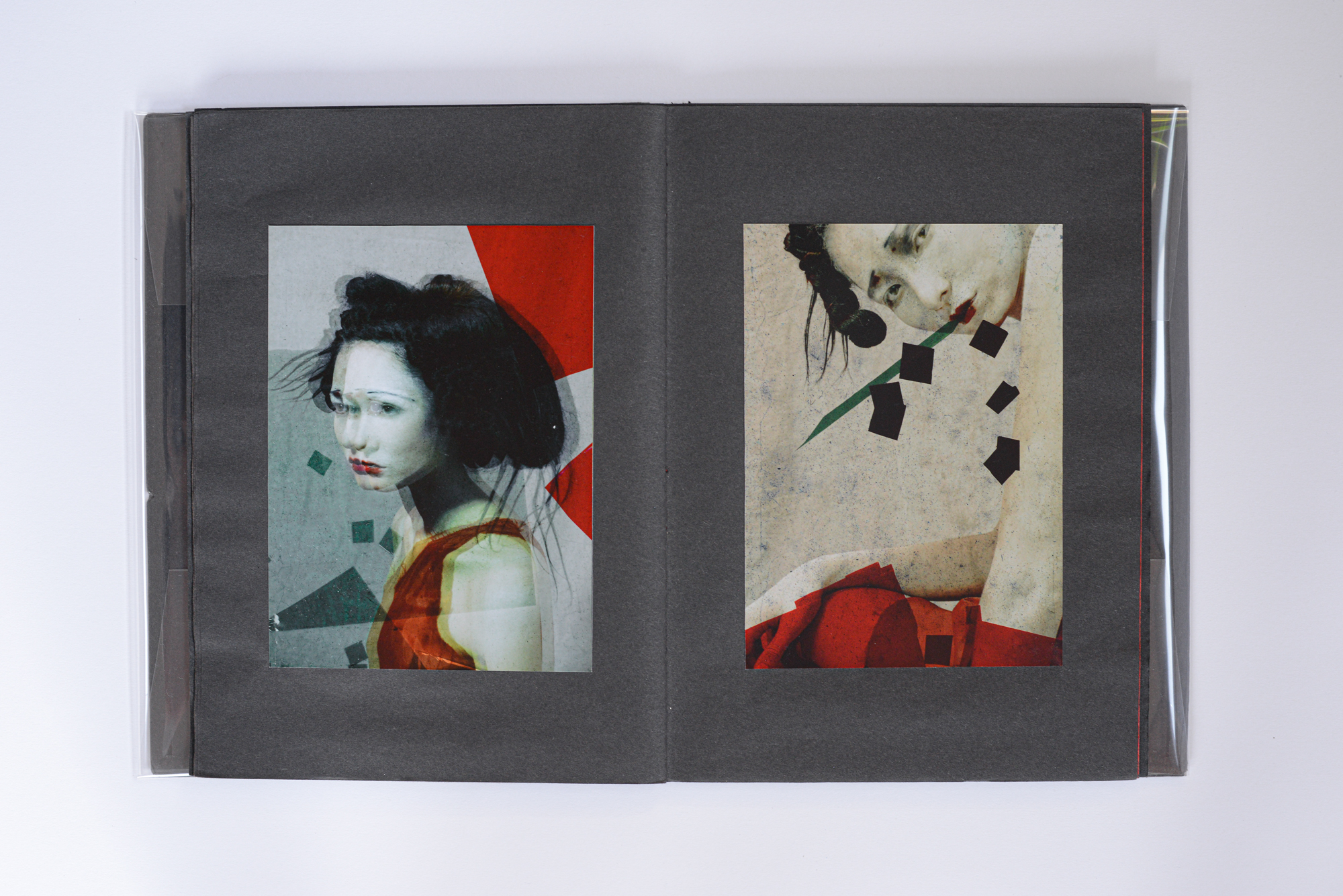
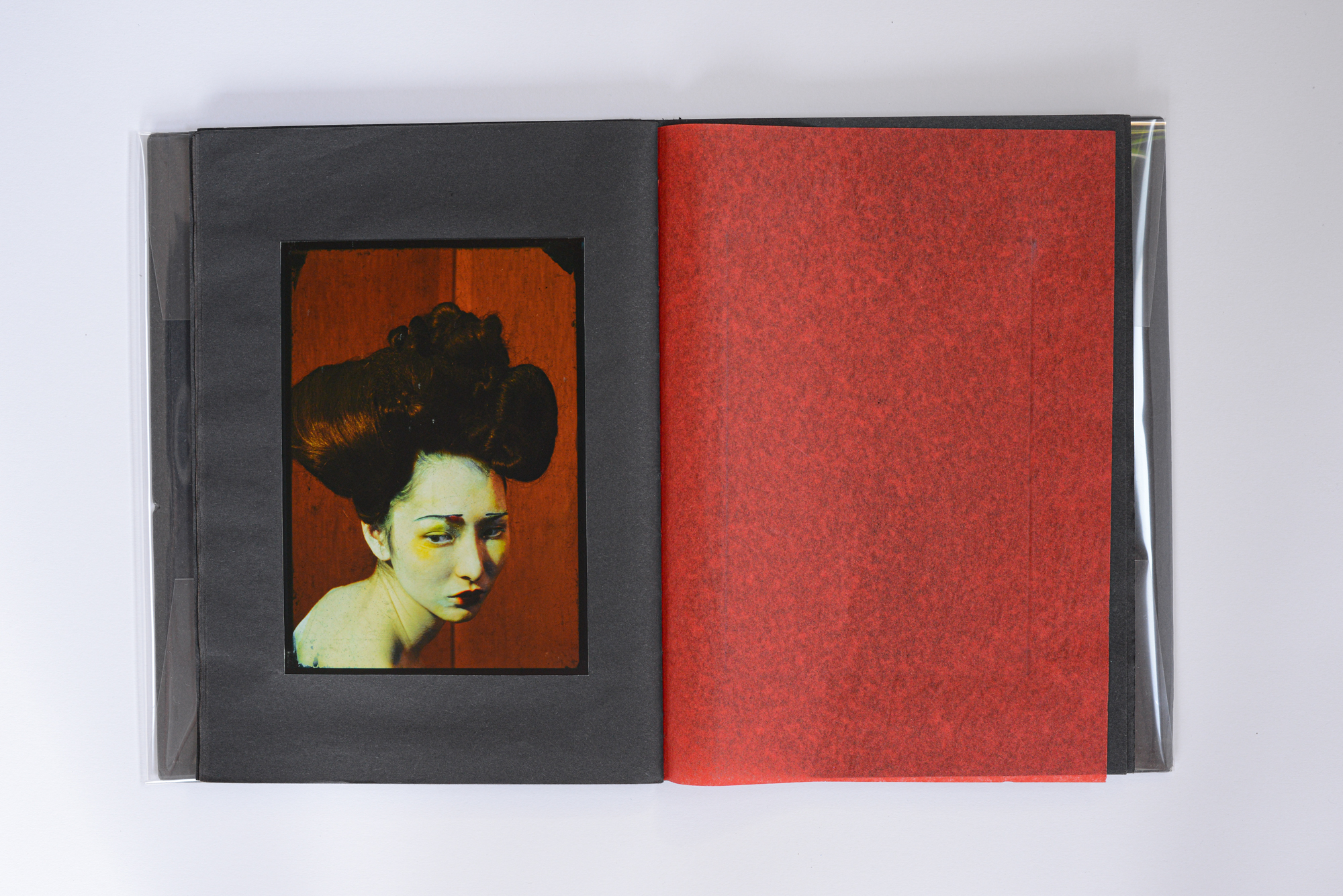
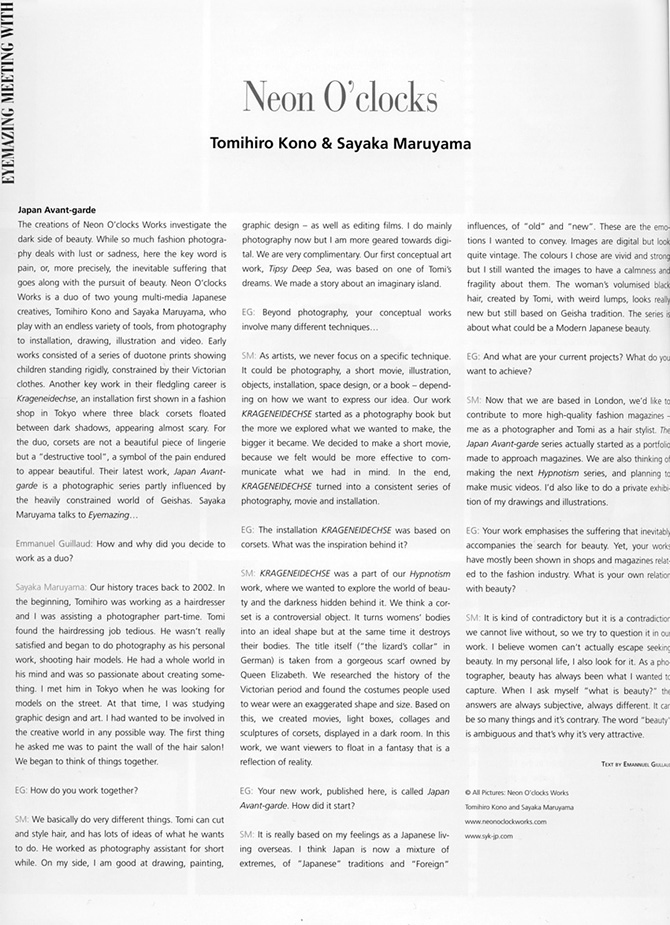



Neon O'clock Works:
JAPAN AVANT-GARDE (2008-2009)
Limited editions
Photography / Book design + binding: Sayaka Maruyama
Hairstyling + Wig: Tomihiro Kono
Publisher: konomad editions
Book Specifications:
Title: 'memorandom 2' Book composed of photographic images
Author: Neon O'clock Works(Tomihiro Kono & Sayaka Maruyama) Page: __ Full color / English
Size: 21mm x 30mm
JAPAN AVANT-GARDE (2008-2009)
Limited editions
Photography / Book design + binding: Sayaka Maruyama
Hairstyling + Wig: Tomihiro Kono
Publisher: konomad editions
Book Specifications:
Title: 'memorandom 2' Book composed of photographic images
Author: Neon O'clock Works(Tomihiro Kono & Sayaka Maruyama) Page: __ Full color / English
Size: 21mm x 30mm



Expressing Japanese notion of beauty by using Geisha as a motif of Japanese traditional symbol of beauty. Having been westernized in many ways, we've found it a shame that respectable Japanese traditions are fading. We'd like to retain and recreate Geisha as a symbol of Japanese modern beauty by using vivid colours and avant-garde compositions.
芸者は伝統的な日本特有の女性像であるが、 その白塗りの化粧、あでやかな着物、しっかりと結い上げられた髪は ある種昔のものという風に、人々の意識から風化されつつあり それは現実味を失い、生活とはかけはなれた歴史上の存在となりつつある。 しかし芸者は女性の模範的美を保有し、その美しい外見のみならず 礼儀や作法という日本人特有の精神の美の表れでもある。 常に古き良きものを取り入れながら新しいものを生み出すという精神のもと JAPAN AVANTT GARDEに表現される女性たちは、そんな芸者のたたずまいに 新しい現代的な印象を与える。美しい女性像は今も昔も変わらず、表面的な変化を伴いつつも 根底では引き継がれてるというシンボルとして、鮮やかで強い色味と大胆な構成のなかに存在している。ロンドンに移住したことで、日本の美を振り返るきっかけになった一冊。


(EYEMAZING 2009 cover & article掲載作品)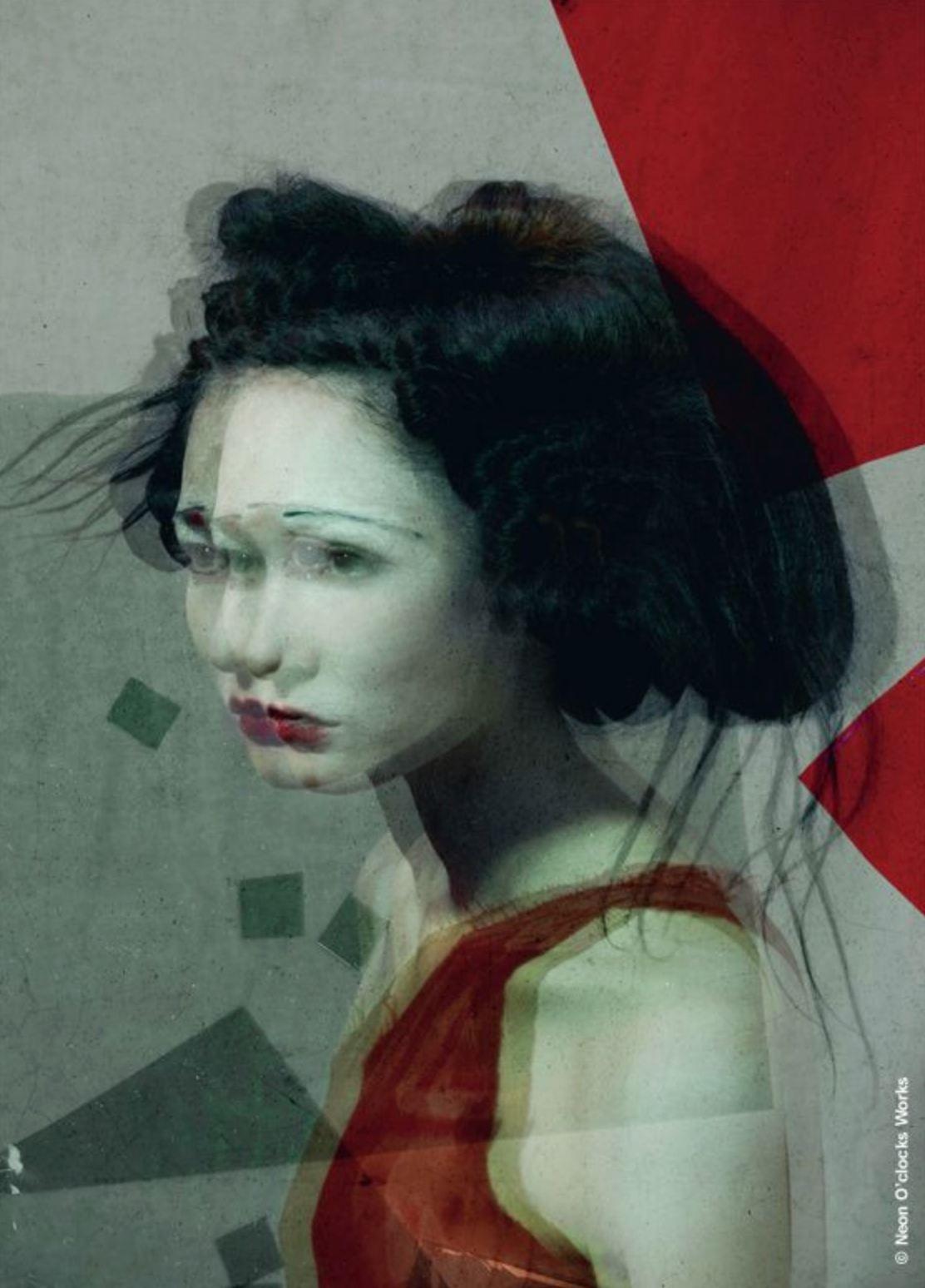

Neon O’clock Works
Tomihiro Kono & Sayaka Maruyama Japan Avant-garde
The creators of Neon O’clocks Works investigate the dark side of beauty. While so much fashion photography deals with lust or sadness, here the key word is pain, or more precisely, the inevitable suffering that goes along with the pursuit of beauty. Neon O’clocks Works is a duo of two young multi-media Japanese creatives, Tomihiro Kono and Sayaka Maruyama, who play with an endless variety of tools, from photography to installation, drawing, illustration and video. Early works consisted of photos of pale British girls showing corsets and standing rigidly, constrained by their Victorian clothing. Another key work in their fledgling career is KRAGENEIDECHSE, an installation first shown in a fashion show in London. Huge abstract corsets floated between dark shadows, appearing almost scary. For the duo, corsets are not a beautiful piece of lingerie but a “destructive tool,” a symbol of the pain endured to appear beautiful. Their latest work, Japan Avant-garde is a photographic series partly influenced by the heavily constrained world of Geishas. Sayaka Maruyama talks to Eyemazing…
Emmanuel Guiolaut: How and why did you decide to work as a duo?
Sayaka Maruyama: Our history traces back to 2002. In the beginning, Tomihiro was working as a hairdresser and I was assisting a photographer part-time. Tomi found the hairdressing job boring and he wasn’t satisfied and began to do photography as his personal thing with professional models. He had a huge passion and vision, and was so passionate about creating something. I met him and saw his work. He was looking for someone to develop ideas with and I was studying graphic design at that time. I had some tools involved in design as well and after that we realized we could combine this into photos to push the wall of the hair salon! We began to think of working together.
EG: How do you work together?
SM: We basically do very different things. Tomi can cut and style hair, and has lots of ideas of what he wants to do. He worked with photography assistants to shoot with models. On my side, I am good at drawing, painting, graphic design – as well as editing films. I do mainly photography now but I am more geared towards digital. We are very complimentary. Our first conceptual art work, Tipsy Deep Sea, was based on one of Tomi’s dreams. We made a story about an imaginary island.
EG: Beyond photography, your conceptual works involve many different techniques…
SM: As artists, we never focus on a specific medium. It could be photography, a short movie, illustration, objects, installation, space design, or a book – depending on how we want to express our idea. Our work goes on from one idea to another: if we could look back, the more we explored what we wanted to make, the bigger it became. We decided to make a story book, because we felt would be more effective to communicate what we had in mind. In the end, KRAGENEIDECHSE turned into a consistent series of photography, movie and installation.
EG: The installation KRAGENEIDECHSE was based on corsets. What was the inspiration behind it?
SM: KRAGENEIDECHSE was a part of our Hypnotism work, where we wanted to explore the world of beauty and the darkness hidden behind it. The corset itself is a controversial object. It turns women’s bodies into an ideal shape but at the same time it destroys their bodies. Its name (“Lizard’s collar” in German) is taken from a gorgeous scarf owned by Queen Elizabeth. We researched the history of the Victorian period and found corsets the most effective symbol for this destructive shape. Based on our research, we created movies, light boxes, collages, and installation pieces, displayed in dark space. Like in all our work, we want our viewers to watch in a fantasy that is a reflection of real life.
EG: Your new work, published here, is called Japan Avant-garde. How did it start?
SM: It is really based on my feelings as a Japanese living overseas. I think Japan is now a mixture of extremes, of “Japanese” traditions and “Foreign” influences, of “old” and “new”. These are the emotions I wanted to convey. Images are digital but combine traditional feel. The colours I chose are white and red but I still wanted the images to have a calmness, a beauty. The images are based on a Japanese “story”, created by Tomi, with found visual inspiration, but new but still based on traditional aesthetics. What could be a Modern Japanese beauty?
EG: And what are your current projects? What do you want to achieve?
SM: Now that we are based in London, we need to contribute to more “real” art scene. I want to work more as a photographer and Tomi as a hair stylist. Japan Avant-garde series actually started as a commission to approach magazines. We are also working to make the next Hypnotism series, and want to make more music videos. I’d also like to make a book based on my drawings and illustrations.
EG: Your work emphasises the suffering that usually accompanies the search for beauty. Yet, most people search for beauty because they want happiness. Isn’t it a contradiction?
SM: It is kind of contradictory but it is a contradiction that inspires us. For me, beauty has no absolute answer. I believe in constant anxiety and struggle. I want to keep pressing myself. I also feel that Tomi and I together, have such an amazing destiny. We are both Japanese but we found each other overseas. We came together, because we shared the same passion. I believe “beauty” is always subjective, always different – it has so many meanings. It’s contradictory, “bad” can be “good”, “ugly” can be “beautiful”, “white” can be “black”. Beauty is ambiguous and that’s why it’s very attractive to us.






